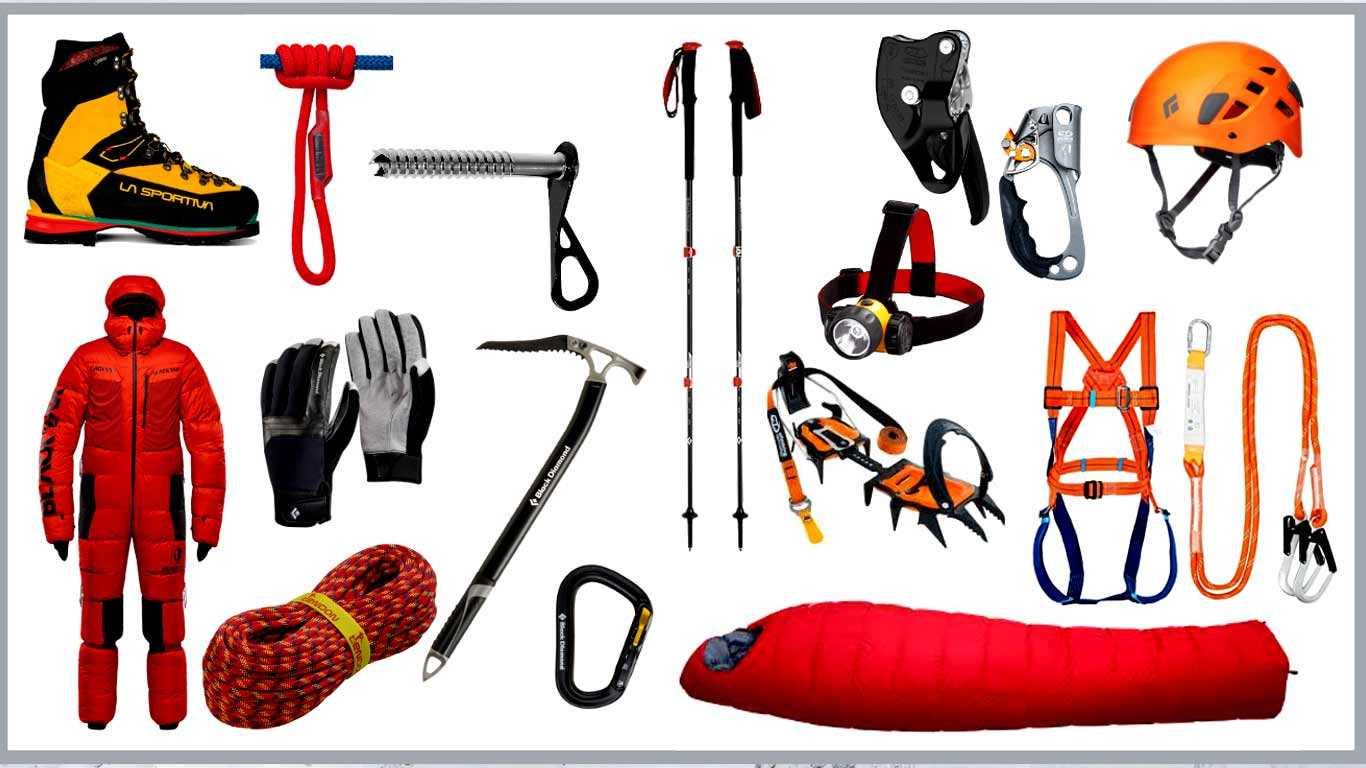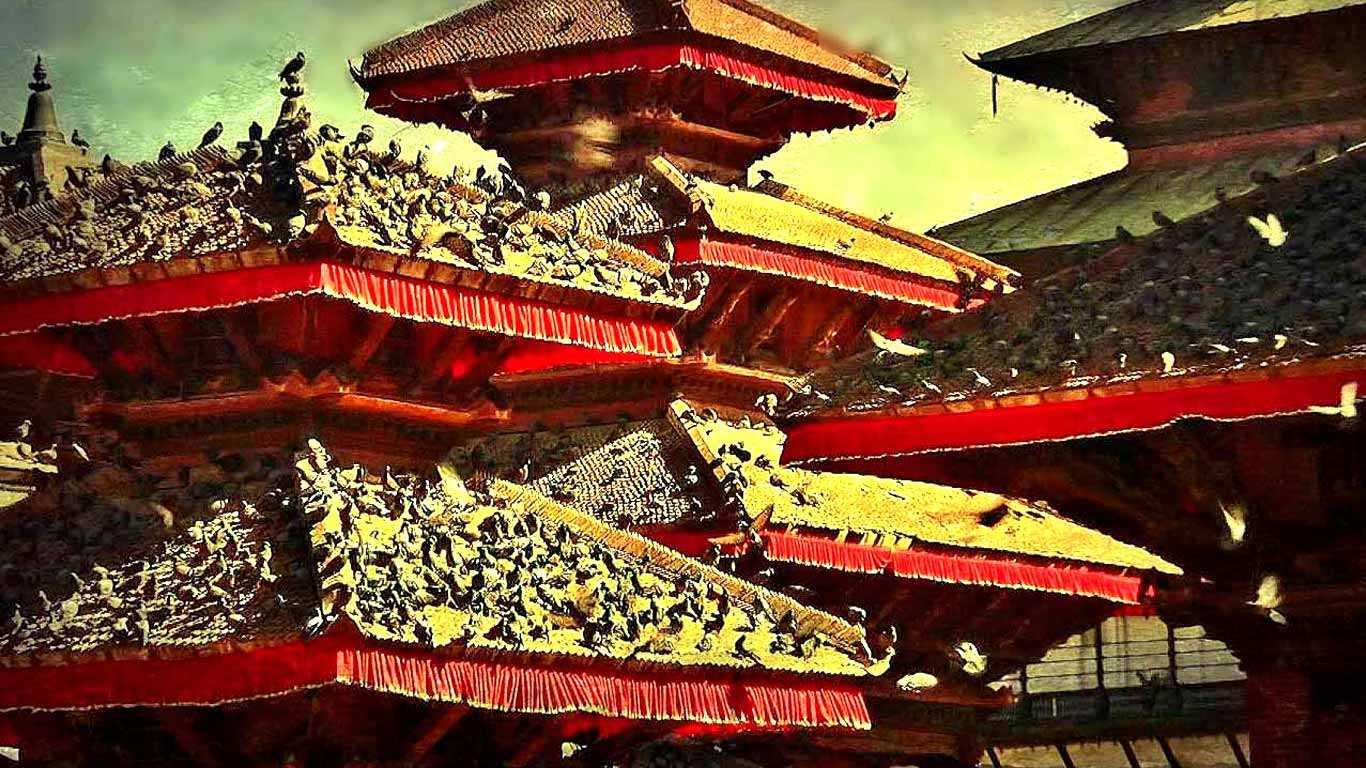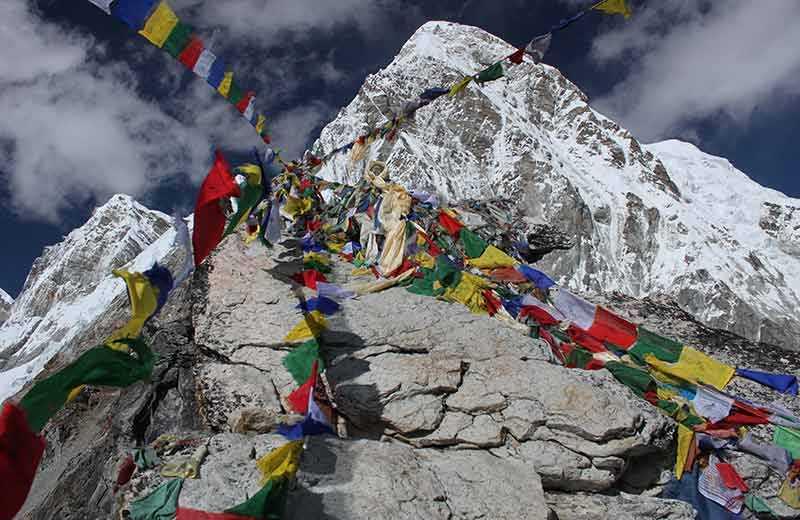A Guide to Lukla Airport

Lukla Airport - Gateway to Everest Treks & Expedition
Lukla Airport's altitude is 2,846 meters (9,337 feet) above sea level. The airport is in the Solukhumbu District of Nepal. It is recognized as a gateway to the Everest region; almost every journey in the Everest Region starts from Lukla/with the Lukla flight.
The world-renowned Airport was officially named Tenzing-Hillary Airport in January 2008. It was renamed in honor of Sir Edmund Hillary and Sherpa Tenzing Norgay, the first people to reach the summit of Mount Everest. Also, it is to mark their efforts in the construction of this airport.
Built in 1964 AD under the supervision of Sir Edmund Hillary, the Airport is now the busiest STOL (Short Takeoff and Landing) airport in Nepal. The flight from the capital, Kathmandu, to Lukla is the nearest route to the Everest Region. In the peak season, the airport has over 50 flights per day.
It is perched on the side of a mountain and is surrounded by mountains. With the mercurial Himalayan weather and a sheer drop, the airport can send shivers down the spine of even the most courageous of the lot. In fact, when you search for “the most dangerous airports in the world,” the internet shows Lukla Airport topping the chart.
Why is Tenzing Hillary (Lukla) Airport called the most dangerous airport in the world?
Lukla Airport is the point of entry and exit for climbers attempting to reach the summit of Everest. And it is regarded as the riskiest and busiest runway in Nepal, not without cause. The airport’s short runway length and other variables make it such a deadly airstrip.

World-recognized media companies such as Forbes have also reported the Airport as the most dangerous airport in the world. The flight duration between Kathmandu and Lukla is only 40 minutes. Many other factors increase the risk.
Takeoff and landing at Lukla are more challenging and dangerous than at many other airports. The runway's elevation, slope, length, and surrounding steep and constricting terrain.
The airport’s runway length is 527 meters (1,729 feet), while the runway at a typical international airport is over 10,000 feet long. The short runway is graded at 11.7% to make up for its small size and assist aircraft in slowing down. The airport’s small size can only house four STOL aircraft at a time.
Landing and Takeoffs in Lukla Airport
Landings on Lukla Airport must occur regardless of outside variables. There is no go-around option accessible owing to the hazardous terrain. Hence, hitting the brakes on time is crucial because of the sheer face of a steep mountain at the runway's landing end.
At the end of a runway during takeoff, there is a steep 700 m (2,297 feet) drop. And if the aircraft doesn’t make it into the air during takeoff, it will instead plunge down the mountainside.

Above all, the most crucial factor for successful Lukla flights is the best weather. The airport's location at a high altitude causes quite a bit of turbulence during flights.
Additionally, the Airport lacks cutting-edge technology. Techs like radar systems and flight navigation aren’t available in Tenzing-Hillary Airport. The takeoff and landing are done visually by the pilots.
If visibility is low, the flight is abruptly closed according to the Visibility Flight Rules (VFR). In fact, most flights are canceled due to poor visibility or bad weather.
The safest time to take a flight to Lukla Airport
The weather has a huge impact on the successful Lukla fight. Despite being an accessible weather, the weather at Lukla airport can worsen at any time. The high elevations are known for having volatile weather.

This is why most flights to Lukla are scheduled in the early morning. The sky is clear, and the wind does not interfere with the flights.
When the weather is good, the flight to Lukla is an exciting and captivating trip. The journey is enriching every traveler's soul with the true meaning of the word "natural magnificence."
The best season to take a flight to Lukla:
The weather is mostly stable and pleasant during the spring and autumn seasons. They are also the best seasons for Everest Treks, Climbs, and Expeditions, including the most famous Everest Base Camp Trek. There are fewer clouds, the wind is less strong, the airport becomes drier, making landings more secure, and the pilots have excellent vision. As a result, planes are both on time and less dangerous.

The spring months, March, April, and May, usually have very clear mornings. While there are chances of delay, the cancellations are, as most disruptions, limited and fleeting during these times.
Once you land in Lukla, you can enjoy your journey with spectacular mountain views. You will be greeted with in-bloom rhododendrons and other wildflowers.
When are the most flights to Lukla cancelled?
With the start of the summer months from the end of May, the chance of precipitation increases, and the sky may get overcast. Thunderstorms and a lot of rain are likely to start at the end of June. With that, the monsoon in Kathmandu and Lukla starts and lasts till early September.
As a result, the chances of flight cancellations are highest during this period. Typically, the rain begins to lessen in mid-September, and visibility is good in October. Then the flights begin running continuously in October.

The pre-winter and winter months from November to February also have a bright sky and superb visibility because of the high pressure.
The chances of cancellation during November and December are low, but fog in Kathmandu and snow in Lukla during January and February may result in cancellations and delays.
Similar Read: Weather in Everest Base Camp
Ways to get to Lukla Airport via flight
There was only one route to flying to Lukla Airport, i.e., from Kathmandu and vice versa, before 2019. But, from 2019, all flights from Kathmandu to Lukla and vice versa were diverted to Manthali Airport in Ramechhap in the tourist seasons due to heavy traffic and runway repairs. Hence, now, two flight routes operate flights to Lukla.
1. Flight from Kathmandu to Lukla
The only way to reach Lukla Airport via airplane was by flying from Tribhuvan International Airport in Kathmandu before 2019. Due to heavy traffic during the tourist seasons, the flights from Kathmandu to Lukla and vice versa are paused, especially in April, May, October, and November.

Other than the above-mentioned months, there are continuous flights if the weather is nice. The flight duration from Kathmandu to Lukla is just 30 minutes.
And as you fly over one solitary mountain valley after another, you will get to observe the terraced scenery of Nepal's interconnecting mountain ranges pass below you.
2. Flight from Ramechhap /Manthali to Lukla
Kathmandu’s flights to Lukla Airport and return flights are not run during the tourist season.

Do you plan on going for your Everest Base Camp Trek, Gokyo Valley Trek, Everest View Trek, Mera Peak Climbing, or Island Peak Climbing? During the peak tourist season, when the Kathmandu–Lukla route is booked up, you have to take the flight from Manthali Airport in Ramechhap. The Manthali airport runs the Lukla Flight throughout the year.
To take the flight from Ramechhap, you will need to drive 5 hours from Kathmandu. Most of the flights are scheduled early in the morning, so to reach on time, you will need to start the drive from Kathmandu around 2 AM in the morning or be there at Ramechhap the day before and stay for the night. The flight duration from Manthali Airport to Lukla is just 25 minutes.
Airways flying to Lukla Airport.
Only helicopters and STOL aircraft are permitted to land at Lukla. Currently, three airlines (Tara Airlines, Sita Air, and Summit Air) are operating regular flights. Nepal Airlines also operates flights on some occasions. Goma Airlines and Simrik Airlines have stopped operating flights to the Lukla airport for a while now.

Twin Otter, Dornier, Let L-410 Turbolet, and Pilatus Turbo Porter are some of the aircraft flying to Lukla. These aircraft can only carry 13 to 19 passengers at a time.
Other than aircraft flights, only helicopters can land at the Airport. The airport is also the busiest helipad in Nepal, where passengers, rescue missions, and sightseeing flights are all conducted. Helicopters are on standby at Lukla Airport during the busiest travel season for emergencies.
The Most Deadly Lukla Airport Tragedies
The first accident at Lukla Airport was seen on October 15th, 1973, after 11 years in the business. The three crew members of Royal Nepal Airlines and passengers were unharmed, but this marked the start of a turbulent history of fatal accidents at Lukla.
The first notable tragic incident occurred in 2008 when Yeti Airlines Flight 103 crashed into the mountain after its pilot lost sight of the runway in heavy fog. All 16 passengers and two of the crew were killed; the pilot was the only survivor.

Another fatal incident happened on September 28, 2012. This occurred at Kathmandu-Tribhuvan Airport (KTM), not at the Airport. At 06:12, Sita Air's Dornier 228-202 passenger jet was given the go-ahead to depart from runway 20.
The first officer gave the order to "Vee one rotate" when the plane approached 70 knots. Despite starting to rotate, the plane didn't rise off the ground. All 19, including the crew members and passengers onboard, were killed.
The latest accident took place on 14 April 2019 when the Summit Air Let L-410 Turbolet aircraft struck the parked helicopter. There were no passengers on board, but the co-pilot and two police officers who were on security duty were killed.
Is the flight to Lukla Airport Safe?
The Lukla Airport is known for being the most hazardous in the world. Additionally, as previously mentioned, there have been a few deadly accidents at Lukla.
To put things in perspective, however, during the busiest months, 30 to 50 aircraft land in Lukla each day, and the vast majority of the 30,000 trekkers who travel to the region each year arrive by air in Lukla. Although statistically more risky than a regular commercial airport, it is nonetheless rather safe.
In addition, the airport has taken more precautions to avoid any mishaps. While weather-related landings are severely prohibited, the pilots who fly out to/from Lukla are expert navigators.

The Civil Aviation Authority of Nepal has established a rigorous standard for pilots flying to Lukla due to the airport's narrow runway, constrained terrain, and a sheer drop of 2,000 feet at the approach of the runway.
The pilots must have performed a minimum of 100 STOL (short takeoff and landing) missions, have over a year of experience flying into Nepali STOL sectors, and have done 10 flights to Lukla with an instructor pilot who is certified.
Similarly, the approach lighting system has been built on the runway at the Airport. Although there are more problems at Lukla Airport than at other airports, the accident ratio is still quite low; therefore, flying there is generally considered to be rather safe.
Alternative ways to reach Lukla Flight
For individuals who want to climb Mount Everest but don't want to take the flight to Lukla, there are a few options as below. In fact, the trekkers used these routes to make it to Everest when the Airport was not there.
1. Drive from Kathmandu to Bhandara & trek to Lukla
Instead of taking the Lukla flight, you can take the Classic Everest Base Camp Trek route through Jiri. You will have to start the trip with around 10 hours of driving from Kathmandu to Bhandara.
Then it takes 4 to 5 days to reach Lukla from Bhandara, depending on your pace. The trekking trail from Bhandara to Lukla winds past lush vegetation, and the views are stunning.
2. Drive from Kathmandu to Salleri/Phaplu & trek to Lukla
Another alternative to the Lukla flight is driving from Kathmandu to Salleri/Phaplu and trekking to Lukla. The distance between Kathmandu and Salleri/Phaplu is about 270 kilometers, and it takes around 8 hours of driving on a private jeep.
And once you start the trek, it will take four days to reach Lukla from Salleri. This trekking route will provide you with a fresh perspective. So take this route if you want to skip the flight and visit Everest Base Camp by Road.
3. Heli drop to Lukla
To avoid flight delays and cancellations, you can choose to take the helicopter service. The helicopter service can be pricey, but you can complete your journey on time.
Once at Lukla Airport, you can continue on your Everest Base Camp Trek or any other Everest journey.
4. Heli flight to EBC and trek down
If you want to make it to Everest Base Camp but do not have enough time for trekking, or do not like uphill trekking, and do not want to take the Lukla Flight, you have the option to take the helicopter ride directly from Kathmandu to Everest Base Camp and trek down to Lukla.

Once in Lukla, you can travel back to Kathmandu by flight, road, or helicopter.
Similarly, the Everest Base Camp Helicopter Tour will solve the problems of those individuals who have only a day left in Nepal but have the desire to reach Everest Base Camp.
The price is on the costly side, but you can take the tour of the base camp and the surroundings of the world’s highest mountain in just 4 hours. You will land at Lukla Airport for fueling during this tour.
A Few Tips for the flight to Lukla Airport:
1. Book the flights when the weather is stable and clear so that you can avoid flight delays and cancellations and complete the journey on time.
2. If you are booking the flight on your own, making a reservation in advance gives you the option of selecting your desired seat.
3. Make sure to select a window seat on the left side of the aircraft for the flight from Kathmandu to Lukla and the right side for the return. You'll have the best chance of seeing the mountain vistas from your window if you sit toward the front or back of the aircraft, away from the main wing area, but it depends on the aircraft type.
4. The baggage weight for the Lukla flight is limited to 15 kilograms, including your hand carry. If it goes above the restriction, it will cost you an extra amount.
5. Book your tickets with reliable airlines or book your trip with an experienced trekking agency like us, Himalayan Trekkers, so that you do not have to go through hassles.


